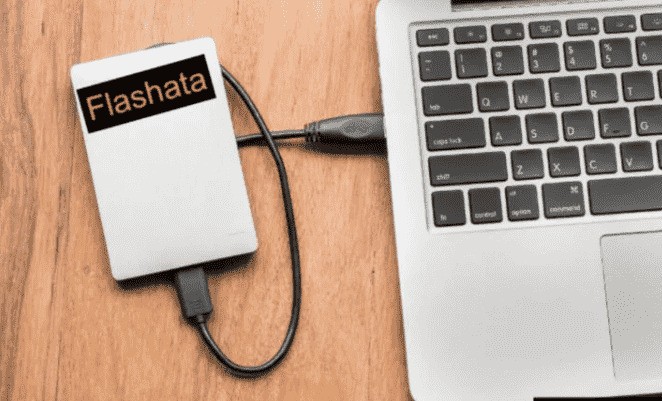Flashata has transformed my daily tech experience, offering blazing-fast data access and seamless performance. From instantly loading apps on my smartphone to securely storing important documents, Flashata’s reliability is unmatched.
Flashata is a cutting-edge data storage technology using flash memory, found in devices like SSDs and USB drives. It offers rapid data access, high durability, and portability. Ideal for enhancing efficiency in consumer electronics, automotive, healthcare, and gaming industries.
Let’s discuss the transformative world of Flashata, a pivotal technology shaping modern data storage solutions. From its fundamental workings to diverse applications across industries, Flashata exemplifies innovation, efficiency, and reliability in the digital age.
How Does Flashata Differ From Traditional Hard Disk Drives (Hdds)?
Flashata and traditional hard disk drives (HDDs) are different in how they store and access data. HDDs use spinning disks and a moving arm to find and read data, which can be slower because of the mechanical parts. They are also bigger and less suitable for small devices.
On the other hand, Flashata uses flash memory, which stores data electronically. It’s faster because it doesn’t have moving parts like HDDs.
This makes Flashata great for devices like phones and SSDs where fast data access is important. It’s also more durable and uses less power than HDDs, which is good for battery life in portable devices.
What Are The Essential Components That Make Up Flashata Technology?

- Memory Cells: These are the basic units where data is stored in Flashata. Memory cells are made up of floating-gate transistors that can trap electric charge, representing binary data (0s and 1s).
- Controller: The memory controller manages the flow of data between the memory cells and the device accessing the Flashata. It sends electrical pulses to write data and interprets stored data during reads.
- Interface: This is the connection through which the Flashata device communicates with other devices, such as USB ports or PCIe interfaces, enabling data transfer.
- Flash Memory: Flash memory is the type of non-volatile storage used in Flashata. It retains data even when the device is powered off, unlike volatile memory like RAM.
- Integrated Circuits: These circuits are crucial for processing and managing the data within the Flashata device. They handle tasks such as error correction and wear leveling to ensure data integrity and longevity.
- Bus: The bus is the pathway that allows data to travel between the memory cells and the controller. It ensures that data transfers occur smoothly and efficiently within the Flashata device.
- Packaging: The physical packaging of Flashata devices, such as USB drives or SSDs, includes protective casings and connectors that ensure compatibility and durability in various environments.
- Firmware: Firmware provides the low-level control and operation instructions for the Flashata device. It manages how data is stored, accessed, and managed within the device.
Read: How Old Is Breckie Hill – A Rising Star In The World Of Social Media
What Types Of Flashata Are Available And How Are They Used?
NAND Flash:
This type is commonly found in USB drives, solid-state drives (SSDs), and memory cards. It’s known for its high storage capacity and fast data transfer speeds, making it ideal for storing large amounts of data in compact devices like smartphones and digital cameras.
NOR Flash:
Used mainly in low-density applications such as BIOS firmware and microcontrollers. NOR flash allows for fast read speeds, which is beneficial for applications where quick access to small amounts of data is essential, like in embedded systems.
3D NAND:
This is an advanced form of NAND flash that stacks memory cells vertically, increasing storage density and capacity. It’s commonly used in high-capacity SSDs and other storage-intensive applications.
QLC NAND:
Quad-level cell NAND flash stores four bits of data per memory cell, maximizing storage density but typically at the cost of slower performance compared to other types. It’s often used in budget-friendly SSDs and storage solutions where cost per gigabyte is crucial.
How Does Flashata Improve Consumer Electronics Efficiency And Performance?
Flashata makes consumer electronics work faster and better by using a type of memory called flash memory. Unlike old-style hard drives with spinning parts, Flashata stores and retrieves data super quickly.
This speed makes your devices like phones and laptops run apps and load files much faster, so everything feels smooth and responsive.
Another big benefit of Flashata is that it uses less power than traditional hard drives. This means your device’s battery lasts longer, which is really important for smartphones and tablets.
Overall, Flashata helps your gadgets work faster and more efficiently, making everyday tasks like browsing the internet or playing games smoother and more enjoyable.
How Is Flashata Improving Healthcare Through Its Applications?
Flashata helps healthcare by storing patient records and medical images securely. Doctors can quickly access these records to diagnose and treat patients faster.
It also supports telemedicine by allowing doctors to check medical data remotely, which is helpful for virtual appointments and monitoring patients from afar.

This technology makes healthcare more efficient and improves how doctors care for patients, whether they’re in the hospital or connecting with them online.
What Role Does Flashata Play In The Gaming Industry?
In the gaming industry, Flashata plays a crucial role in enhancing the gaming experience and performance. It is used in gaming consoles and handheld devices to store game data, updates, and downloadable content.
Unlike traditional hard drives, Flashata provides faster loading times for games, allowing players to jump into their favorite games quickly without long loading screens. This speed is essential for maintaining the excitement and immersion of gameplay.
How Can I Ensure The Security Of Data Stored On Flashata Devices?
Firstly, enable encryption on your Flashata device. Encryption scrambles your data into a code that can only be read with the right decryption key. This ensures that even if someone gets hold of your device, they won’t be able to access your data without the correct password or key.
Secondly, use strong passwords. Choose passwords that are difficult to guess and avoid using easily identifiable information such as birthdays or names. A strong password usually includes a mix of letters (both uppercase and lowercase), numbers, and special characters.
By combining encryption with strong passwords, you can significantly increase the security of your data stored on Flashata devices. These measures help protect your information from potential threats and ensure your peace of mind when using portable storage solutions.
What Are The Main Benefits Of Flashata Compared To Other Storage Technologies?
- Speed: Flashata allows for faster data access and transfer speeds compared to traditional hard disk drives (HDDs). This means you can retrieve and save data more quickly.
- Durability: Unlike HDDs, Flashata has no moving parts, making it more resistant to physical shock and damage. This enhances reliability and reduces the risk of mechanical failure.
- Portability: Flashata devices are compact and lightweight, making them easy to carry and transport. They are ideal for storing large amounts of data in a small, portable format.
- Energy Efficiency: Flashata consumes less power than HDDs, which helps extend battery life in mobile devices and reduces overall energy costs in data centers.
- Silent Operation: Since Flashata doesn’t have spinning disks or moving parts, it operates silently, contributing to a quieter working environment.
What Are Some Of The Challenges And Limitations Associated With Flashata?
Certainly! Flashata, despite its advantages, has some challenges. One big issue is that it doesn’t last as long as traditional hard drives (HDDs).
The memory cells in Flashata can only handle a certain number of times data can be written and erased before they wear out. This means with heavy use, the device can slow down or stop working over time.

Another problem is keeping data safe when Flashata isn’t used for a while. If the device sits without being used, the electrical charges that store data can slowly go away. This could mean losing data if it’s not refreshed regularly by rewriting it onto the device.
Read: Vc7774 Apple Shaped Body Celebrities – Celebrating Elegance
FAQs:
1. What is the difference between NAND and NOR flash in Flashata?
NAND flash is used in high-density applications like USB drives and SSDs, while NOR flash is used in low-density applications such as BIOS firmware.
2. How does Flashata improve the efficiency of manufacturing processes?
Flashata technologies like IoT and AI enable predictive maintenance, automated production lines, and real-time data analytics, improving efficiency and reducing downtime.
3. What are some of the emerging trends in Flashata technology?
Emerging trends include 3D NAND technology, quad-level cell (QLC) NAND, and PCIe Gen4 interfaces, which enhance storage capacity, reliability, and speed.
4. What advancements are expected in Flashata technology in the future?
Future developments may focus on increasing storage capacities, improving reliability, and enhancing compatibility with emerging technologies.
Conclusion:
While Flashata offers significant advantages in speed, portability, and durability, it also faces challenges such as limited lifespan, data retention issues, and compatibility concerns with older systems. These factors should be considered when choosing Flashata for data storage needs, balancing its benefits with potential drawbacks.
Read more:
- Crypto Bastion 25mshenbloomberg – A Beacon In The Cryptocurrency Landscape
- Developpez Votre Application M-Commerce – Developing Your Application for Success
- Showbizztoday.Com Celebrity Gossip Fashion – Your Daily Dose From Showbizztoday.Com
- Vaçpr – Revolutionizing Industries With Cutting-Edge Technology






